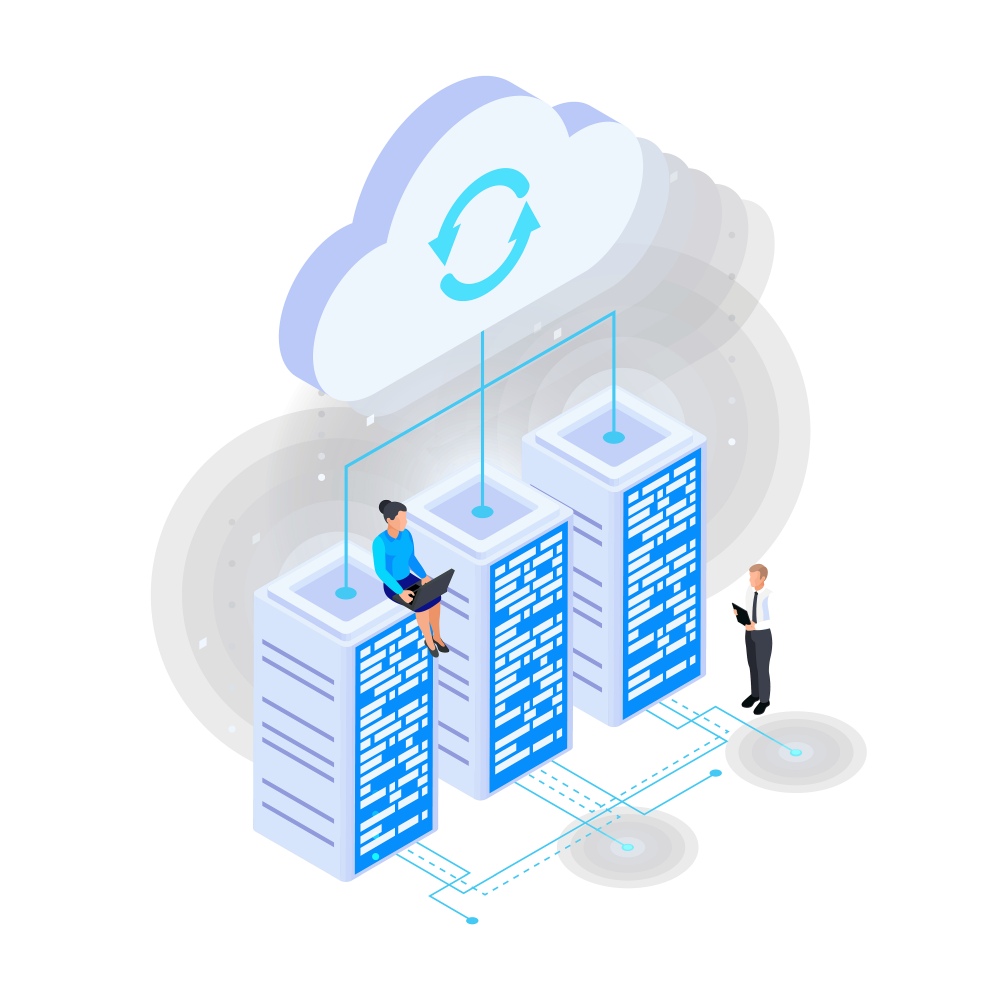With the advent of cloud computing, organizations moved their IT infrastructure, in part or completely, to the cloud. The cloud is a data center that houses numerous servers arranged in racks. These servers consume a huge amount of power – on average 7 Kilowatt per rack. Apart from that, servers generate a lot of heat and, therefore, need chilled water or air cooling units – which also consume power. More electric consumption means higher CO2 emissions. Water resources are also becoming scarce. Here’s how Edge Computing s sustainable.
Image by macrovector on Freepik
The aggregated power consumption in a data center could be enough to power a small town. The hyperscale data centers (massive data centers owned by Microsoft, Google, AWS, Oracle, and Alibaba) can use as much energy as 80,000 US households.
While enterprises capture data from various sources, such as point-of-sale machines in retail stores, consumer apps, supply chains, and various internal systems, this data is usually sent back to the cloud (a data center) for processing.
However, it is not essential to send all data to the cloud. In some instances, it can be processed on-site or on the device on which it was captured. And that is what Edge computing or shadow cloud is all about.
Let’s consider a few use cases of edge computing.
An autonomous vehicle (self-driving car), such as a Waymo cab in the US, has 360-degree cameras. The video feeds from the cameras (data) are analyzed in the vehicle itself. The brakes are automatically applied if a person or obstruction is detected in the vehicle’s path. Now this would not happen instantly if the video feed was sent back to the cloud for processing with the command to apply the brakes coming back after a minute. That’s because of the latency in data transmission from the vehicle, over a mobile data network, back to the cloud. This is an example of processing at the edge.
Here is another use case.
Facial recognition and biometrics (iris scanners or fingerprint scanners) are becoming increasingly common at airports, workplaces, banks, and other high-security areas. Of course, images of faces or fingerprints are scanned in advance and stored on the device. This is also applicable to voice recognition systems, where voice samples of authorized personnel are pre-recorded.. So when an authorized person has to enter the facility, their face finger or iris is scanned and compared to the pre-recorded sample. If there is a match, the gate opens.
The Digi Yatra facial recognition system and app used in Indian airports is an example. Singapore’s Changi airports and some airports in the UAE also use similar systems to facilitate faster movement of passengers.
Also see: PhonePe’s Green Data Center Breaks PUE Record with Indigenous Immersion Cooling Solution
Edge Computing is Sustainable
Since edge systems use low-power chips, they do not require a great amount of power. And since the chips do not emit too much heat, expensive cooling systems are not required. By shifting data processing from centralized data centers to local device, edge computing plays a crucial role in improving sustainability by reducing power consumption and CO2 emissions.
The use of artificial intelligence for enterprise and consumer computing is a recent trend. Enterprises send AI workloads to the cloud/data center for processing. AI workloads cannot be processed using conventional processors. They need GPUs or graphic processing units such as those manufactured by Nvidia. The AI workloads are processed by large language models such as ChatGPT 4.0. GPUs and LLMs require a lot of power and cooling, so the question of sustainability comes up again. As data centers upgrade by adding more GPUs, how will they be sustainable in the future?
The answer to that is small language models, low-power GPUs, and neural processing units or NPU. These can all be used at the edge and therefore consume much less power. The reduced energy demand of edge computing directly contributes to lowering the carbon footprint of IT operations, making it a more sustainable alternative to traditional data center solutions.
While cloud computing has revolutionized IT infrastructure, the move toward edge computing is essential for ensuring long-term sustainability and reducing dependency on energy-intensive data centers.
Already, manufacturers are producing low-power chips for portable devices like smartphones and laptops. These AI-enabled devices will run small language models – which means the workload need not be sent back to the cloud for processing. They can be processed on the device itself.
And that’s another example of sustainable edge computing. As companies strive for net zero emissions, edge computing offers a viable solution by minimizing the environmental impact typically associated with large-scale cloud computing data centers.









